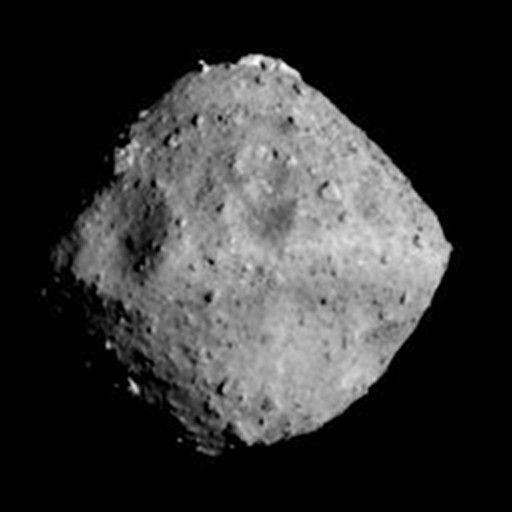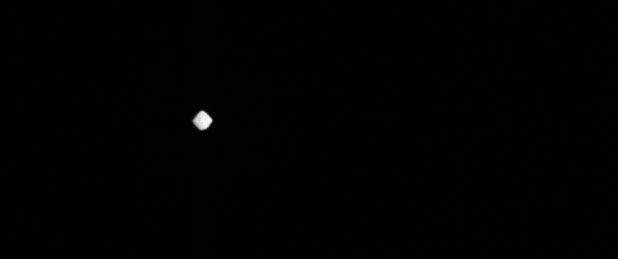Asteroid Ryugu: Japan's Hayabusa2 Photographs Dice-Like Space Rock Like Never Before

After traveling in the darkness of the cosmos for about four years, Japanese Space Agency’s (JAXA) Hayabusa2 space probe is finally inching closer to its target — a remote asteroid named Ryugu — and providing first-ever images that reveal its distinct shape and surface features.
The spacecraft, which has flown nearly 280 million kilometers since taking to the skies, is part of a sample return mission aimed at landing on the distant space object, retrieving surface samples and heading back to Earth, just like how its predecessor, the original Hayabusa mission, did from an asteroid called Itokawa.

Asteroid Ryugu has been classified as a potentially-dangerous near-Earth object or NEO due to its orbital path which can bring the object eerily close to Earth sometime in the future. However, despite witnessing a bunch of weirdly-shaped asteroids in the cosmos, astronomers and sky-watchers thought that the 3,000-feet wide object was round in shape.
The idea completely changed when Hayabusa2 came within 200 kilometers of the object and took a series of images, giving a close look at its exact shape. Essentially as the spacecraft inched closer, the asteroid, which looked like a ball originally, started taking the shape of a square-ish object and finally revealed itself as a dice or diamond-like space object. Yuichi Tsuda, the manager of the project, compared the structure to a piece of mineral fluorite or perhaps an abacus bead.
The images, taken on June 24 from a distance of about 40 kilometers, also revealed craters, rock-formations, and other geographical features spread on the asteroid’s surface.
According to a statement from the agency, this, combined with other related elements, will help mission controllers determine where the spacecraft’s lander and three mini rovers should be landed and deployed.
“The rotation axis of the asteroid is perpendicular to the orbit,” Tsuda said in the statement. “This fact increases the degrees of freedom for landing and the rover decent operations.” However, he added there is also a “peak in the vicinity of the equator and a number of large craters, which makes the selection of the landing points both interesting and difficult.”
Even the shape of the object will have a role to play in the future operation of the mission. As per the researchers, unlike Earth and Moon, the diamond-like shape of this asteroid will change how gravity acts there. Meaning, its direction won’t point directly downwards in wide areas of the space rock.
“We therefore need a detailed investigation of these properties to formulate our future operation plans,” Tsuda added.
Once the samples are collected, the spacecraft will start its return journey and come back home by the end of 2020. The work holds importance because space-rocks this big are thought to have formed from bigger parent bodies. This means follow-up work after sample retrieval could provide further insight into the history of our Solar System and the bodies that first came to be.
© Copyright IBTimes 2025. All rights reserved.





















